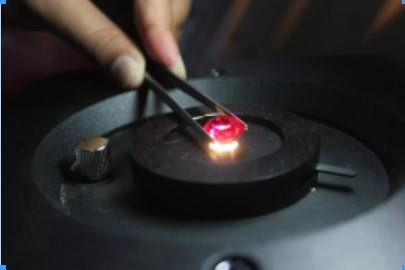Diamond Testing: Unveiling the Brilliance and Authenticity
Diamonds are prized for their exquisite beauty and rarity, making them one of the most sought-after gemstones in the world. However, with the increasing prevalence of synthetic and imitation diamonds, it has become crucial to have reliable methods for diamond testing to determine their authenticity and quality. In this article, we will explore the various techniques and instruments used in diamond testing, ensuring that you have the knowledge and tools necessary to unveil the brilliance and authenticity of these precious gemstones.
Visual Inspection
Visual inspection is often the first step in diamond testing. Experienced gemologists examine the diamond's physical characteristics, including its color, clarity, cut, and carat weight. They use magnification tools, such as loupes and microscopes, to assess the diamond's internal and external features, searching for any irregularities or signs of artificial treatment. While visual inspection provides valuable insights, it is not sufficient to determine a diamond's authenticity conclusively.
Diamond Tester
A diamond tester is a handheld device widely used in diamond testing. It utilizes electrical conductivity to differentiate between diamonds and other diamond simulants, such as cubic zirconia or moissanite. Diamond testers work by measuring how well a gemstone conducts heat. Diamonds, being excellent conductors of heat, dissipate heat rapidly, causing the tester to emit an audible sound or display a positive result. However, it's important to note that diamond testers may not be effective in differentiating between synthetic diamonds and natural diamonds, as both exhibit similar electrical conductivity.
Spectroscopy Techniques
Spectroscopy techniques, such as infrared spectroscopy and Raman spectroscopy, provide valuable insights into a diamond's chemical composition. Infrared spectroscopy analyzes the infrared light absorption patterns of a diamond, helping to identify its type and potential treatments. Raman spectroscopy, on the other hand, examines the scattered light to determine the diamond's molecular structure and authenticity. These spectroscopic methods are highly accurate and can distinguish between natural and synthetic diamonds.
Diamond Certification and Grading
Diamond certification and grading by reputable gemological laboratories are crucial in ensuring the authenticity and quality of a diamond. Organizations such as the Gemological Institute of America (GIA) and the International Gemological Institute (IGI) evaluate diamonds based on the "Four Cs" - carat weight, cut, color, and clarity. They provide detailed reports that include information on a diamond's measurements, color grade, clarity grade, and any treatments or enhancements. These certifications serve as trusted documentation and provide assurance to buyers and sellers.
Advanced Diamond Testing Techniques
Advanced diamond testing techniques, such as photoluminescence (PL) spectroscopy and UV fluorescence, can provide further insights into a diamond's origin and treatments. PL spectroscopy analyzes the diamond's emission of light after exposure to a light source, revealing information about its color origin. UV fluorescence, on the other hand, examines how a diamond reacts under ultraviolet light, helping to identify any treatments or enhancements. These techniques are employed by expert gemologists to gain a comprehensive understanding of a diamond's characteristics.
For More Info:-
